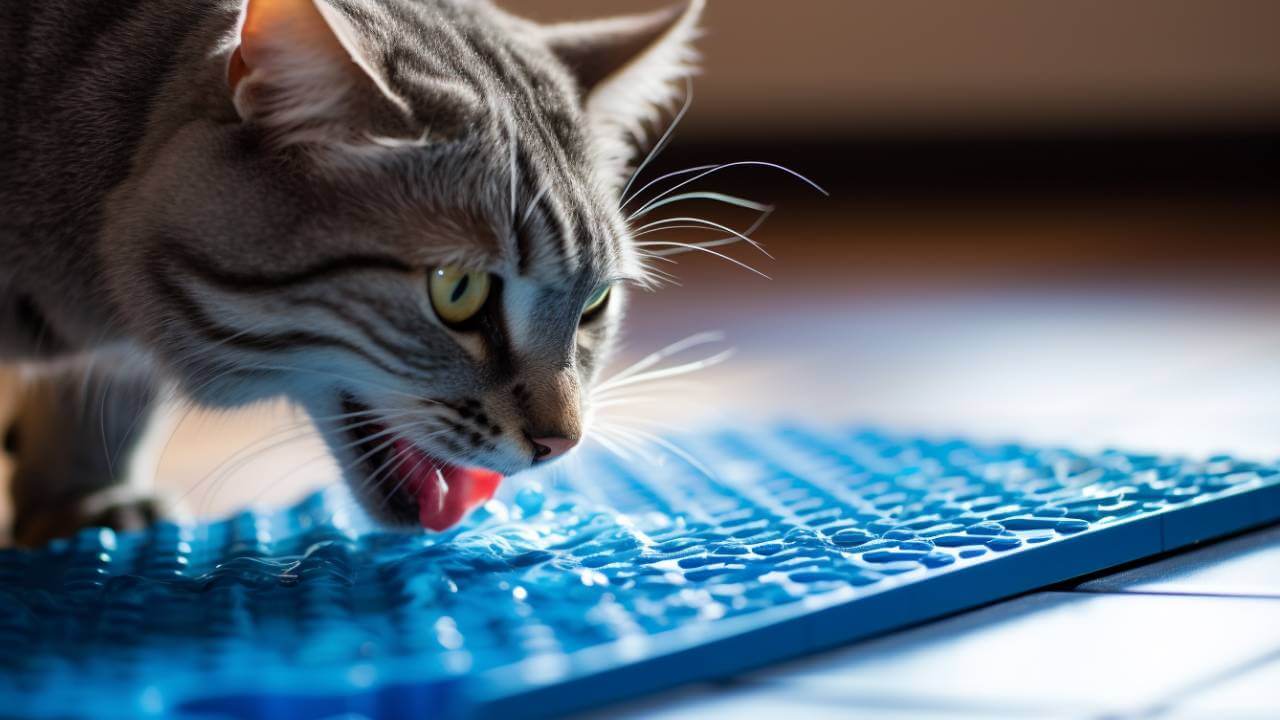If you suspect your cat has swallowed a harmful substance or foreign object, inducing vomiting may be necessary. However, before attempting home remedies, you must contact your veterinarian or a poison control hotline for immediate guidance.
They can provide specific instructions tailored to your cat’s situation and help you determine if inducing vomiting is the right course of action. In this article, we’ll guide you through making your cat vomit when necessary.
At-Home Methods to Make a Cat Throw Up
Before making your cat vomit, consult your veterinarian for guidance. They can provide essential advice tailored to your cat’s specific condition. Here are some general steps you can follow:
Hydrogen Peroxide
Hydrogen peroxide is a commonly recommended and safe method for inducing vomiting in cats when administered correctly. It’s readily available at most drugstores and is a staple in many pet first-aid kits. However, using the right concentration and dosage is crucial, as your veterinarian advises.
Here’s a step-by-step guide on how to use hydrogen peroxide to make your cat vomit safely:
- Choose the Right Hydrogen Peroxide: Use 3% hydrogen peroxide solution, which is typically safe for cats. Ensure it does not contain any additional additives or chemicals.
- Determine the Correct Dosage: Your veterinarian will guide you on the appropriate dosage for your cat’s weight. A standard recommendation is one teaspoon of 3% hydrogen peroxide per five pounds of body weight.
- Administer the Hydrogen Peroxide: Use a syringe or dropper to gently administer the hydrogen peroxide into the side of your cat’s mouth. Be sure to angle the syringe towards the back of the mouth to avoid choking or aspiration.
- Monitor Your Cat: Watch your cat closely after administering the hydrogen peroxide. Vomiting usually occurs within 15-20 minutes. If your cat doesn’t vomit within this time frame, consult your vet for further guidance.
Hydrogen peroxide is not suitable for all situations, and your vet may advise against it if your cat has underlying health issues or if they ingested a substance that is not effectively expelled by vomiting.
Dish Soap Solution
A dish soap solution is another method that can induce vomiting in cats, but it should be approached with caution and under the guidance of a veterinarian. This solution is considered a mild irritant, and its purpose is to stimulate the cat’s stomach lining, triggering the natural vomiting reflex.
Here’s how to use a dish soap solution safely:
- Select a Safe Dish Soap: Choose a mild, fragrance-free dish soap that doesn’t contain harsh chemicals or additives. A gentle dish soap with no added scents or antibacterial agents is ideal.
- Prepare the Solution: Mix the dish soap with warm water in a small bowl or container. Your veterinarian will provide you with the recommended ratio and amount to use. A few drops of dish soap in a cup of warm water should suffice.
- Administer the Solution: Use a syringe or dropper to gently introduce the solution into the side of your cat’s mouth. Angle the syringe toward the back of the mouth to avoid choking or aspiration. Ensure your cat swallows the solution.
- Monitor Your Cat: Watch your cat closely after administering the dish soap solution. Vomiting should typically occur within 15-20 minutes. If your cat doesn’t vomit within this time frame, contact your veterinarian for further guidance.
The dish soap solution is milder than hydrogen peroxide and less likely to cause irritation or damage to the cat’s throat or stomach. However, it should only be used under professional guidance, as proper use or correct ratios can lead to complications.
Cat Grass
Cat grass, catnip grass, or cat-friendly grass is a natural and gentle way to help your cat induce vomiting when ingesting something they shouldn’t have. This method is generally considered safe and is suitable for cats of all ages, including kittens.
Here’s how to use cat grass effectively:
- Purchase Cat Grass: You can find cat grass at most pet supply stores, and it’s also available as seeds that you can grow at home. Ensure you choose cat grass specifically grown for feline consumption, as it’s safe and non-toxic.
- Place the Cat Grass: Position it within your cat’s reach once you have cat grass. You can use a pot or container filled with soil to grow the grass indoors or plant it in your garden if you have outdoor cats. Make sure it’s easily accessible to your cat.
- Observe and Encourage: While your cat may consume cat grass voluntarily, you can encourage them to eat more if they haven’t vomited within 15-20 minutes after ingesting the potentially harmful substance. Offer the cat grass again and observe closely.
Cat grass is an excellent option for owners who prefer a natural and non-invasive method to help their cats expel ingested irritants. It’s a gentle approach and can be particularly beneficial if you’re concerned about using substances like hydrogen peroxide or dish soap.
Never use substances like ipecac syrup or other human medications without your veterinarian’s guidance, as they can be dangerous for your cat.

When Not to Induce Vomiting
Inducing vomiting is not always the right course of action. There are specific situations when it’s best to avoid making your cat throw up:
- Caustic Substances: If your cat has ingested a caustic or corrosive substance like bleach or drain cleaner, vomiting can cause further damage to its esophagus and mouth. Seek immediate professional help.
- Sharp Objects: Trying to make your cat vomit when they’ve ingested a sharp object like a needle or glass can lead to injury. Consult your vet for safe removal options.
- Seizures or Loss of Consciousness: If your cat experiences seizures, loses consciousness, or has difficulty breathing after ingesting something toxic, skip inducing vomiting and seek emergency veterinary care.
Conclusion
Knowing how to make a cat throw up when necessary can be crucial for cat owners. However, it should be done with care and under professional guidance.
Always consult your veterinarian before attempting any at-home remedies, and never hesitate to seek immediate professional help in emergencies. Your cat’s safety and well-being should always come first.

FAQs
Can I make my cat vomit with salt?
Salt is not recommended, as it can harm your cat’s health. Stick to safe methods recommended by your veterinarian.
Is it safe to induce vomiting at home?
Only induce vomiting at home under your veterinarian’s guidance. Incorrect methods or substances can harm your cat.
What should I do if my cat swallows a poisonous plant?
Contact your vet immediately. They can advise you on the appropriate action to take.
Can I use hydrogen peroxide on a kitten?
Consult your veterinarian first, as the dosage for kittens may differ from that for adult cats.
How can I prevent my cat from ingesting harmful substances?
Keep toxic items out of your cat’s reach, provide them with safe toys and activities, and supervise their outdoor adventures to minimize risks.






Dealing with a cat who ate something she shouldn’t have. Your article saved the day!💔
Dealing with a pet emergency can be stressful. Your guide on making a cat vomit in emergencies was informative
Had to make my cat vomit once after he ate something he shouldn’t